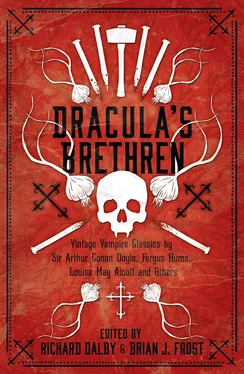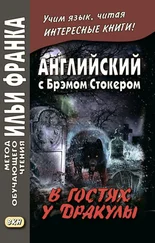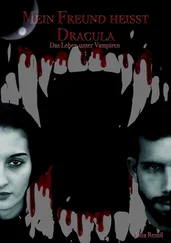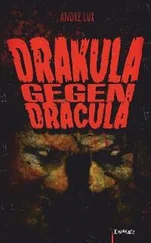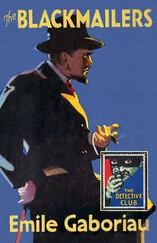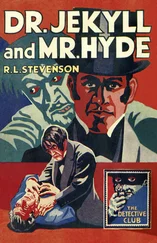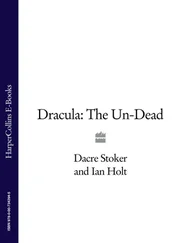A story by one of Poe’s contemporaries, James Kirke Paulding’s ‘The Vroucolacas,’ has, in the past, attracted the curiosity of vampire aficionados due to its extreme rarity, but since it has become accessible on an internet website any hopes that it might turn out to be a forgotten gem have sadly been dashed. Originally published in the June 1846 issue of Graham’s Magazine , it is about a frustrated suitor pretending to be a vampire in order to win the hand of his sweetheart. Vampiric possession is the theme of Erckmann-Chatrian’s ‘The Burgomaster in Bottle,’ which first appeared in the French journal Le Démocrate du Rhin in 1849. Since then, this story has strangely been overlooked by compilers of vampire anthologies, a situation finally rectified by its inclusion within these pages. The most frequently anthologised vampire tale from the 1840s is ‘The Mysterious Stranger,’ the bloodsucking villain of which, Azzo von Klatka, is thought to have been the model for Count Dracula. Formerly uncredited, it has recently been established that the author of this story was a little-known German writer named Karl von Wachsmann, and it first appeared in print in 1844, which is much earlier than was previously supposed. Hereditary vampirism is the theme of Aleksey K. Tolstoy’s ‘Upyr,’ which was first published in 1841 under the pseudonym ‘Krasnorogsky.’ Also worth a brief mention is the vampire episode from Alexandre Dumas’s The Thousand and One Phantoms (1848), which usually bears the title ‘The Pale Lady’ when it is published separately.
Novels with a vampire as the central character were something of a rarity in the first half of the nineteenth century, and the only one remembered today is Varney the Vampyre; or, The Feast of Blood , which was originally published in weekly instalments between 1845 and 1847, coming out in book form immediately afterwards. The vampiric hero-villain of this long, rambling narrative is Sir Francis Varney, a tall, gaunt figure with cadaverous features, who is made even more frightening to look at by his glassy eyes, taloned hands, and fang-like teeth. He is also incredibly strong, can move about rapidly, and is a master of disguise. Even on those occasions where he is seemingly killed, he is subsequently revived by the Moon’s rays, allowing him to resume his nefarious activities. Finally, after an interminable series of escapades, Varney becomes tired of his life of horror, and ends it all by throwing himself into the crater of Mount Vesuvius. Currently available in a number of paperback editions, in which the novel’s authorship is attributed to either James Malcolm Rymer or Thomas P. Prest, this crudely-written ‘penny dreadful’ is really only noteworthy for the influence it had on later writers, who reworked the variations on the vampire theme which it had introduced.
In comparison with the previous decade, the 1850s were lean years for vampire fiction. The only work of any significance was Charles Wilkins Webber’s Spiritual Vampirism (1853), which had the distinction of being the first novel to have psychic vampirism as its theme. The following decade was more fruitful, producing some notable short stories featuring female vampires. Of these, none are more highly regarded than Ivan Turgenev’s ‘Phantoms’ (1864), the hero of which is repeatedly visited at night by a phantasmal female figure, who he suspects is secretly sucking his blood. The first vampire story by an Australian author, ‘The White Maniac: A Doctor’s Tale’ (1867), by Mary Fortune, centres on events that take place inside a strange house where everything in it is coloured white. A doctor’s desire to solve the mystery leads to the shocking discovery that this has been done by the owner of the property to placate his ward, a beautiful young noblewoman, who suffers from a rare type of anthropophagy, making her prone to homicidal rages whenever she sees something coloured scarlet. One of the earliest appearances of the ‘vamp’ – the name usually given to a heartless, man-eating seductress – was in ‘A Vampire,’ an episode in G. J. Whyte-Melville’s Bones and I; or, The Skeleton at Home (1868). Calling herself Madame de St Croix, this insatiable sexual vampire has remained youthful and desirable over many years and has acquired a string of lovers, all of whom have died in mysterious circumstances. On more traditional lines is William Gilbert’s ‘The Last Lords of Gardonal’ (1867), in which a nobleman is attacked by his beautiful bride on their wedding night, unaware that she has been brought back to life by a wizard’s magical powers, and can only survive in her present state by sucking her husband’s blood.
Vampirism of a much more unusual kind occurs in Louisa May Alcott’s ‘Lost in a Pyramid; or, The Mummy’s Curse’ (1869). In this chilling tale an ancient curse is activated when a seed found in a mummy’s wrappings is planted, and the white flower it bears slowly absorbs the vitality of a young woman after she pins it to her dress. One of the least effective stories from the 1860s is ‘The Vampire; or, Pedro Pacheco and the Bruxa’ (1863), by William H. G. Kingston. Although the main narrative is preceded by a fascinating account of the activities of vicious Portuguese vampires called Bruxas, their non-appearance in the story itself is something of a letdown.
The only vampire-themed novels from the 1860s remembered today are Le Chevalier Ténèbre (1860) and La Vampire (1865), both of which were written by Paul Féval. In the earlier novel, two notorious male siblings, one a ghoul, the other a vampire, periodically emerge from their 400-year-old graves and go on the rampage. The later novel features the equally formidable Countess Addhema – a pale, fleshless old woman with a bald pate – who is temporarily transformed into a ravishing beauty every time she applies to her bare skull a living head of hair torn from one of her beautiful young female victims. Féval added to his tally of vampire novels in the following decade, penning La Ville Vampire in 1874. A parody of early nineteenth century Gothic novels, its unlikely heroine is the real-life author Ann Radcliffe, who mounts an expedition to find the legendary vampire-infested city of Selene, hoping to rescue a friend who has been taken there following her abduction by the evil vampire lord Otto Goetzi.
The first story to feature a lesbian vampire was Joseph Sheridan Le Fanu’s ‘Carmilla’ (1871). In this frequently anthologised classic a young woman named Laura is visited nightly in her bedchamber by the new house guest, the alluring Carmilla, and is drawn into an increasingly intimate relationship with her. Thereafter, Laura’s health declines, raising fears that she is the victim of a vampire. It eventually transpires that Carmilla is the revenant of Countess Mircalla Karnstein, who has been dead for more than one hundred and fifty years.
In the 1880s – looked on today as the beginning of supernatural fiction’s golden era – there was a noticeable broadening of the vampire story’s scope. For example, bigotry, and the tragic circumstances that may arise from it, provides the basis for Eliza Lynn Linton’s ‘The Fate of Madame Cabanel’ (1880), in which a young Englishwoman living among superstitious French peasants is brutally murdered after being mistaken for a vampire. In contrast, Phil Robinson’s ‘The Man-Eating Tree’ (1881) is about an arboreal vampire poetically described as ‘a great limb with a thousand clammy hands.’ In another offbeat story, Karl Heinrich Ulrichs’ ‘Manor’ (1884), a drowned sailor’s corpse becomes reanimated and issues from its grave at night to suck the blood of a youth who had been in a homosexual relationship with the dead man. A unique story from 1886 which is still capable of sending shivers up and down readers’ spines is Guy de Maupassant’s ‘The Horla,’ the narrator of which fears he has become the plaything of an invisible vampire. Psychic vampirism is the theme of Frank R. Stockton’s ‘A Borrowed Month’ (1886), in which a young man suffering from a debilitating illness discovers that, by the force of his will, he can draw energy and vitality from his friends. Psychic vampirism of a more sinister kind is practised in Conan Doyle’s ‘John Barrington Cowles’ (1884); this time the perpetrator is a beautiful, sadistic woman who luxuriates in her ability to destroy her lovers.
Читать дальше
